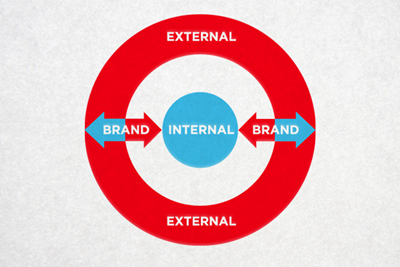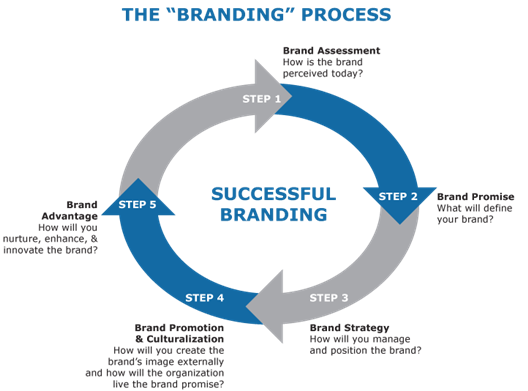What You Need to Know Before You Develop a Brand Strategy: Part 2
In part one of this blog I talked about what a brand strategy really is versus what it is not. I pointed out the importance of simplifying the brand strategy process and focusing on the four “M’s” of getting More Customers to buy More Stuff for More Years and for More Money. At the end of part one of this brand strategy development series, I began to discuss the benefits your company can enjoy if you grow a strong brand. If you haven’t read part one yet, this would be a good time to take a moment to review those brand strategy details and practice the exercises discussed.
Achieving a strong brand really does require strategic thinking. Senior leaders of Fortune 500 Companies are well aware of the importance of strategic thinking in business. In the Harvard Business Review Blog a research report noted that: “When asked to select the leadership behaviors most critical to their organizations’ future success, executives chose strategic 97% of the time.” It’s made very clear by this one proven fact alone that every element of behavior you pursue in support of your business growth must be managed strategically in order to have the greatest chance of success. Why then would you not place a high level of importance on the strategy involving the face of your organization and how it is perceived, both internally and externally?
Defining, crafting, and just as importantly: maintaining your industrial brand involves a thorough evaluation of the many aspects of generating a strong brand. Then you need to ask yourself: What are your company’s most important business goals?
Your Business Goals and Brand Perception
 As you begin to reflect on the business goals of your company, make sure your focus is in the right place. Your brand strategy must be one that will help you accomplish those goals.
As you begin to reflect on the business goals of your company, make sure your focus is in the right place. Your brand strategy must be one that will help you accomplish those goals.
Many companies (not just industrial) start branding initiatives from the outside in. They answer the question: What is the image we want to create for our company? After much deliberation, a considerable amount of work goes into developing marketing communications that include messaging that helps to position the brand in the intended way. However, this is “backwards branding.” Unless you are incredibly lucky and your entire organization already represents the desired image in every way, this type of initiative will be short-term and will not have the staying power to grow a strong brand. Strong brands must begin from the INSIDE.
- Your brand should be based on genuine qualities that intrinsically exist in your company
- It should reflect your culture, values and the way you do business
- It has to be who you are – not who you wish you were
- It can be something you “grow into”; but it cannot be something that is not in your DNA (unless you’re willing to rebuild your company from the ground up)
- Your brand promise should be something you can consistently deliver – BEFORE you start promoting the brand
In order to develop your strategic branding platform; you will need to stop and evaluate the following 8 questions:
- What are the most important, tangible desired outcomes for business growth that you are willing to commitment to and strive for?
- What do YOU believe are the current perceptions (image) of your company?
- How do you WANT your company to be perceived?
- How do you prioritize your target markets & customers? Where is the greatest growth opportunity today, and long-term?
- Do your customers have unmet needs that neither you nor your competitors are currently filling? Are they different in different target markets?
- Brand promises: what are your core competencies? What are the capabilities that if taken away, your Company would no longer exist?
- Value differentiators: how are YOU exclusive? Is this where you really want to be? If it is not, what would have to change?
- What is your value proposition? You must be RELEVANT – EXCLUSIVE – and BELIEVABLE.
I will not be discussing differentiation or value propositions heavily in this article, but please watch for the next blog in this brand strategy development series because the topics of differentiation and development of a value proposition are both critical elements that cannot be neglected in order to successfully develop your brand strategy.
Growth Outcomes for Industrial Companies
 Your company’s growth goals should be possible to achieve; but now is not the time to be conservative. Having big, bold goals will give your entire organization a shot of adrenaline and build momentum in every area of the company.
Your company’s growth goals should be possible to achieve; but now is not the time to be conservative. Having big, bold goals will give your entire organization a shot of adrenaline and build momentum in every area of the company.
Think in terms of the bottom-line and actual sales growth percentage. By how much do you want your sales to grow in the next 12 Months, 24 Months, 48 Months and so on?
Consider your willingness to adapt as needed to meet your goals, and decide which ones you are motivated to achieve.
Are you willing to physically expand your reach via the addition of acquisitions or new operational locations or are you only interested in growing within the confines of what is possible by maintaining your current physical size and geographical locations? Are you willing to add staff resources that can impact growth? Would you be willing to add “brand extensions”: products or services you don’t currently offer, but that would complement and strengthen your brand?
Brand Perceptions | Yours and Theirs
The final piece of the brand strategy development process I’m going to discuss in this article is “perception.” If you recall, the perception of your brand really is, to a large degree, your brand.
Remember, your brand is not what you say it is, nor is it necessarily what you think it is. The next step in this process is for you to evaluate how you believe your brand is perceived in its current form, and then compare that to the desired perception you want your brand to include, both internally and externally.
After documenting your current beliefs about what you want your brand perception to be and what you think it actually is, the next challenge is to find out what others really think it is.
You need to provide an opportunity and encouragement for your employees, vendors, and customers to express themselves regarding their perspective of your brand.
 Through a series of one-on-one discussions with those who interact with your organization both internally and externally, you’ll begin to solidify the knowledge of where you currently stand in terms of brand perception and image. It is not always easy to get everyone to express themselves openly, nor is it always easy to fully define the golden threads of similarity between the data you gather from your employees, vendors, and customers. However, the benefits of staying the course will make this process of obtaining information regarding your brand perception well worth your while.
Through a series of one-on-one discussions with those who interact with your organization both internally and externally, you’ll begin to solidify the knowledge of where you currently stand in terms of brand perception and image. It is not always easy to get everyone to express themselves openly, nor is it always easy to fully define the golden threads of similarity between the data you gather from your employees, vendors, and customers. However, the benefits of staying the course will make this process of obtaining information regarding your brand perception well worth your while.
Now, the moment of truth: compare the themes from your interviews, and the way your staff believes your brand is perceived with your desired brand perception. How far apart are they? You will have to evaluate the work that needs to be done in order to align the two as closely as possible.
It could be that the majority of your work will be internal. If your employees don’t perceive your brand correctly, how can they be expected to “live the brand” in their personal role within the company? This is the hardest part of developing a strong brand, and the reason why there are not MORE strong brands. It’s easy to throw money at a marketing firm, tell them the image you wish to create for your company, and then blast it to the world through creative marketing campaigns. However, if there isn’t an adequate infrastructure with employees who are motivated to be “brand ambassadors” and deliver what you promise – AND a partnership formed with your marketing firm in which there is consistent communication about goals and expectations: the most creative marketing campaign in the world will fall flat on its face.
Many industrial companies find the prospect of managing this process overwhelming, or simply don’t have the resources to dedicate to it. Outsourcing this strategic brand development can be a smart decision for more reasons than a lack of time. Having a 3rd party to facilitate discussion among your key shareholders and to conduct “brand image” interviews can provide you with fresher, less biased observations and evaluations. If you need help developing a brand strategy, call Marketects today!


Leave a Reply